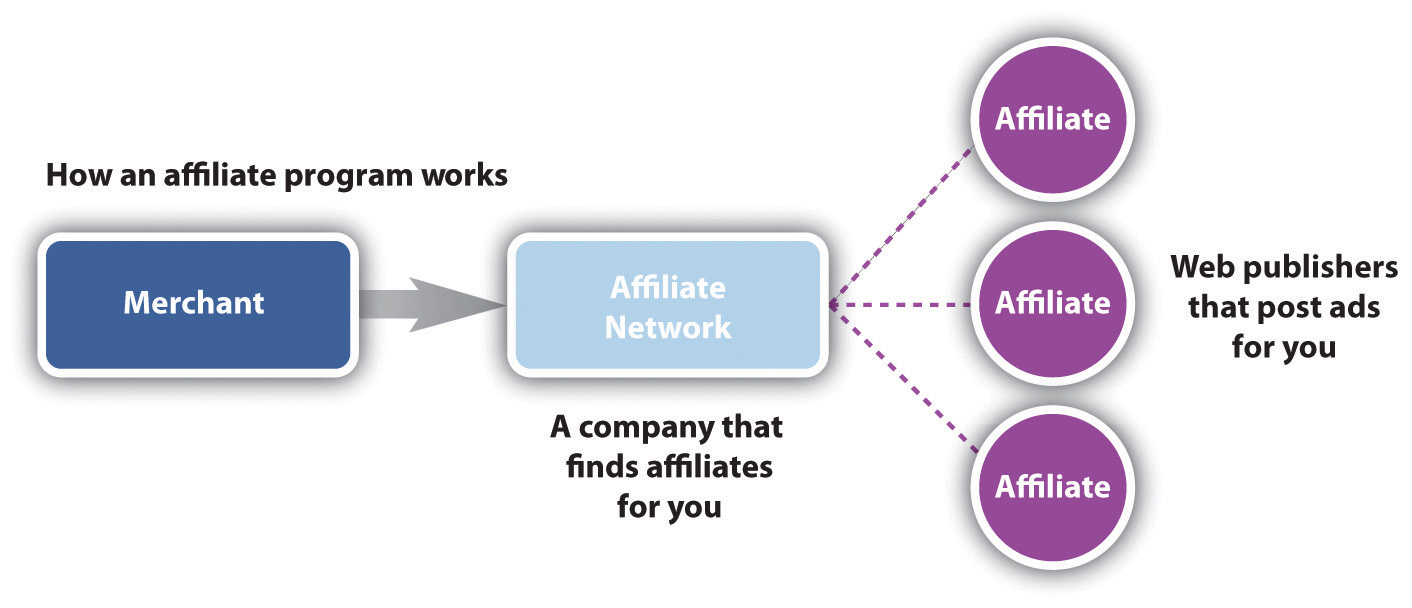This is “Affiliate Networks”, section 4.6 from the book Online Marketing Essentials (v. 1.0). For details on it (including licensing), click here.
For more information on the source of this book, or why it is available for free, please see the project's home page. You can browse or download additional books there. To download a .zip file containing this book to use offline, simply click here.
4.6 Affiliate Networks
Learning Objective
- Learn what affiliate networks are and how they fit into affiliate marketing.
As well as the affiliate and the merchant, there is a generally a very important third party in the affiliate marketing mix—the affiliate network.
While some small affiliate programs and some very large affiliate programs (such as Amazon Associates) are run by the merchant, most merchants opt to use an affiliate network to provide most of the technical solutions required for an affiliate program.
Affiliate networks provide tracking solutions, reporting on programs to both affiliates and merchants, hosting of creative banners, commission payment options, and support to both affiliates and merchants. Affiliate networks have many affiliates, and many merchants, signed up to them, so they are ideal sources for recruiting affiliates if you are a merchant or for finding merchants to promote if you are an affiliate. Affiliate networks provide a one-payment solution to merchants, as the merchants will be invoiced for all the commission collectively owed, which is then dispersed to the affiliates.
Figure 4.6

Affiliate networks act as a gateway between merchants and affiliates.
Affiliate networks usually charge the affiliates nothing to join. They can charge a merchant a setup fee, which will cover the cost, making sure that the tracking solution is successfully integrated, and can charge a monthly management fee, depending on the level of support offered to the merchant. Affiliate networks usually charge the merchant a percentage of the commission earned by the affiliate (called a commission overrideAffiliate networks usually charge the merchant a percentage of the commission earned by the affiliate.), so that there are incentives for the networks if they perform well. As a rough guide, this is typically 30 percent of the commission rewarded to the affiliate.
Some leading affiliate networks include the following:
- Commission Junction. http://www.cj.com
- LinkShare. http://www.linkshare.com
- Affiliate Window. http://www.affiliatewindow.com
- TradeDoubler. http://www.tradedoubler.com
Key Takeaways
- Affiliate networks are often used as intermediaries between affiliates and merchants. Affiliate networks provide tracking solutions, reporting, and support to both affiliates and merchants.
- Affiliate programs may be with a merchant directly (as with Amazon.com) or through a network. Affiliate networks act as gateways between merchants and affiliates.
Exercise
- Why do you think some affiliates run affiliate programs for their own Web sites?




